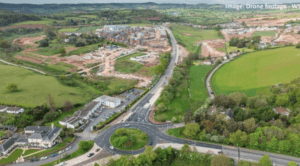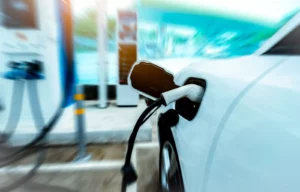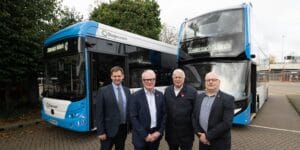Global consultancy WSP has issued a background paper explaining how transparent, interoperable data is key to creating the modern, digitalised energy system that will power a net zero future, and asks what do network operators need to do to become more data-savvy and maximise the value of their data?
Manuel Castro, Associate Director at WSP writes:
Imagine a future where you and your neighbours all drive electric vehicles and charge them at home. To mitigate the increased load on the electricity network, you are incentivised to charge your cars at different times. You benefit, and the network operator avoids an expensive infrastructure upgrade to cope with demand.
This vision describes a data-driven market, with the customers as participants and the network operator as facilitator. It’s the sort of vision that the government’s Energy Data Taskforce aims to enable through its strategy to create a modern digitalised energy system. This system would use data to reap the benefits of decarbonisation and decentralisation.
Some of the data required to manage this system and fulfil the taskforce’s recommendations will come from customers – through a new generation of smart meters, for example. But that is not enough on its own; network operators will need to know much more about how their networks and associated assets are performing.
The process starts with data visibility: understanding what data it is important to have, what already exists and what is missing. But how do you do this with records of thousands of miles of network with its overhead lines, underground cables, pylons, poles, substations other assets? Artificial intelligence could hold the answer. We’ve been working with Western Power Distribution on its Spatially Enabled Asset Management (SEAM) project, using machine learning to find and correct inaccuracies in network asset data that have been introduced over the years as paper records were digitised and moved between systems.
The next step is infrastructure and asset visibility: understanding where things are, what they can do and how they could interact with other parts of the system, to inform network planning, operation and management. Armed with the right data, it’s possible to create powerful models to inform network investment decisions.
Working with the Energy Networks Association, we built a macro representative model of electricity distribution networks in Great Britain. This tool can be used to give a view of when, and how much, investment is required to accommodate new, low-carbon technology (LCT) efficiently into the network based on different LCT uptake scenarios – as well as the most suitable network and/or non-network solution.
As well as informing decisions across coming decades, data is needed to optimise network operations by making decisions in real time. For example, constraints on a network can be managed more effectively with better data. Knowing more about customer demand in real time and the performance of assets in real time will enable operators to manage areas of the network that are congested. This could be by incentivising customers to change behaviour in real time. They could, for example, allow their electric vehicle charging, electrical appliance use or electric heating to be shifted to a later time. Alternatively, the network could switch to flexible energy resources such as battery energy storage systems.
A data-driven approach to real-time and long-term decision making in energy networks is a marked departure from what have traditionally been passive systems built on a fit-and-forget basis. In the past, an operator put in a cable that was thick enough to cope with generalised patterns of historic demand and consumers used their appliances and waited for their bills. Today, customers are more engaged and willing to participate. They want to benefit from being flexible about when they charge their electric vehicles. They want to be paid for feeding energy into the grid from the solar panels on their homes. Data is key to this step change.
Making the most of data will unlock the flexible and dynamic system the UK needs to decarbonise its energy and achieve net zero.
(Picture – Yay Images)



























